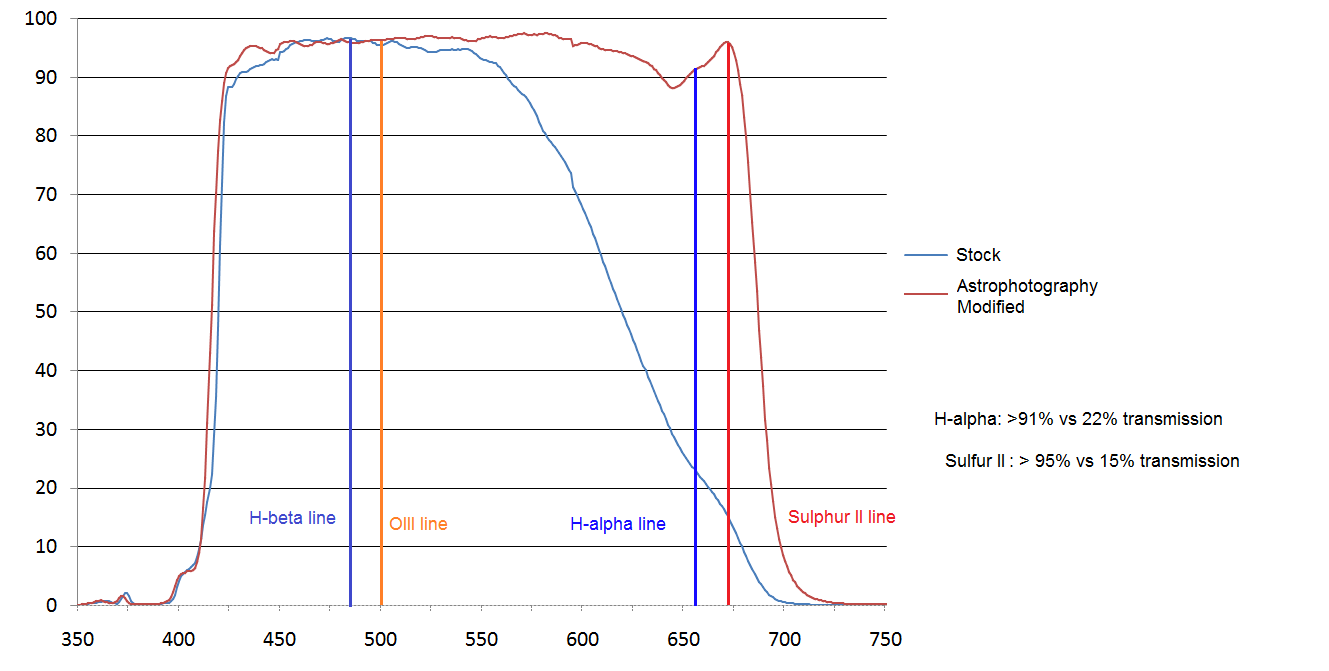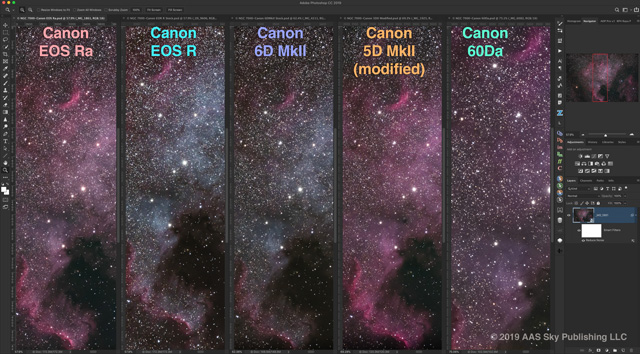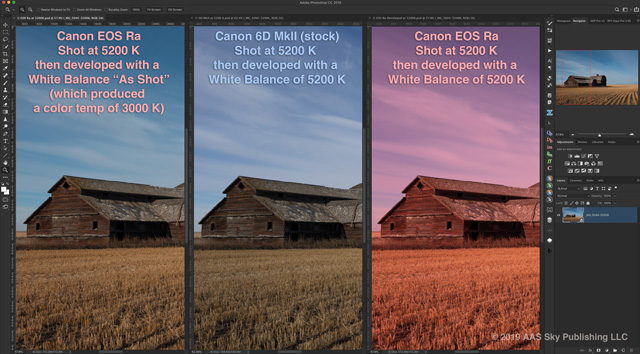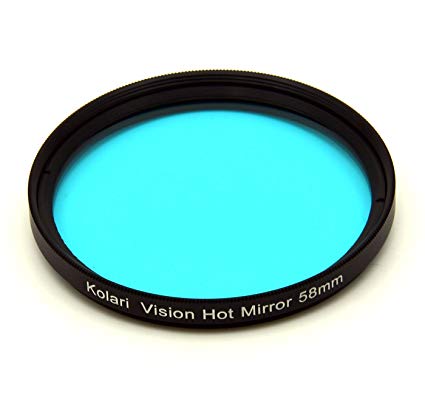This post may contain affiliate links(s). An affiliate link means I may earn advertising/referral fees if you make a purchase through my link,
without any additional cost to you. It helps to keep this site afloat. Thank you in advance for your support. If you like what we do here, maybe buy me a
coffee.
The EOS-Ra: What you need to know
I’ve been having a few discussions about the EOS Ra and thought it would be best to create an article about the camera, what you can do with it, and what it’s limitations are.
It goes without saying that the 30x magnification on the EOS Ra would be extremely helpful for starscapes such as the milky way and also tethered to a telescope, where you may not want to use a focusing mask such as a Bahtinov mask. We're going to talk more about the main difference between this camera and a normal EOS R, which is the sensor itself.
What makes the EOS Ra special?
The EOS Ra has a specially modified filter sitting in front of the sensor. Usually, a normal camera will have what is called an IR/UV cut filter, or a hot mirror filter. These filters block IR and UV light from being received by the sensor because sensors themselves are far more sensitive to IR light. IR light would overwhelm a normal CMOS sensor, which is why most of the IR light is blocked.
In an astrophotography modified camera, especially one that primarily involves the h-Alpha spectrum, the sensor is nearly the same as a regular camera’s sensor, except that instead of falling off and blocking more IR light as it gets progressively more near invisible IR, that it allows up to the h-Alpha spectrum which resides in near IR at 656nm. This special filter acts normal except for the h-Alpha light.
This image is of a modified filter used for astrophotography. It is similar to the 60Da sensor's filter. It's unknown whether or not the EOS Ra will be good, as well, for Sulfur II, but as you can see from the spectrum results, it would most definitely be better than the normal color filter that only allows 15% transmission of Sulpher II and 22% of H-alpha. Again, this is what a modified camera done by Kolari Vision would appear. The EOS-Ra will be similar to this.

How does it compare against a normal camera?
What does it allow the camera to do? Sky and telescope have taken a look at the Ra, and compared it against some of the various other options for astrophotographers. This is an image taken of the North American nebula. And as you can see, the Ra performs far better than the R and 6D Mark II, and is very comparative to a modified 5D Mark II. It also seems to be better than the 60Da was. Now, this is an image taken with a telescope, most likely a smaller 80mm refractor or similar.

(Photo Credit Sky and Telescope)
What if your main goals are milky way shots, would you still see a benefit? Some, but most of the milky way character is made up of dust, a high density of stars, and hydrogen gas. You’ll still see some benefit around the galactic core as this comparison between the 60Da and 60D shows. However, the difference is much more subtle than that of deep-sky even a telescope based “wide field”, which is still around a 400mm focal length or more.

(photo credit Tanja Schmitz – flicker)
Can I use the EOS-Ra to shoot normal color photography?
You can also use the EOS Ra for normal shooting, but your images will be warmer than if you shot with a regular camera. The reason being is that you are allowing that narrow band of IR light to reach the sensor that normally would not. That light is red in color, so your images would appear more normal. You do have to modify the color balance as Sky and Telescope have shown in this image below.

(Photo Credit Sky and Telescope)
Another option, which will render your images as a normal color camera is to place a hot mirror filter in front of the camera, rendering the light hitting the sensor to be the same as a normal color camera. This is done by using a hot mirror filter that attaches to the front of your lenses. If you are familiar with full-spectrum cameras, then yes, this is the same method that is used for those cameras. Avoid the incidence type of filter because you cannot use them under around 28mm without inducing a corner color cast to your images. As explained by Hoya.
The effect of the filter is achieved mainly through the multi-layer coatings on the surface of the filter. Hoya begins with crystal clear, colorless optical glass and then bonds coating to this filter that block both UV and IR light rays outside of the range mentioned.
There is light incidence angle dependence in the transmission factor because over-layer is thick, so this filter isn’t suited for wide-angle lens. However it is suited for astrophotography with standard and telephoto lenses.
Increasing the angle of incidence, meaning light rays entering the filter from an extreme angle as is the case with super-wide and ultra-wide angle lenses, leads to an increasing color shift as the angle increases. This is based on the physics of light and the nature of the coatings. All UV-IR cut filters have the same properties in this regard. It is not recommended that this filter be used with lenses having a field of view greater than 60 degrees.
However, there are filters that you can use. These are made from similar filter material as your regular color camera's sensor uses. Thes block IR light by using absorption and not by using interference. There is a visible difference between an IV/UV incidence filter and a hot mirror filter. A hot mirror filter will be a greenish-blue color while an incidence filter will be more clear. A sample of such is shown below which is from KolariVision. This is also a filter I personally use on my full-spectrum cameras to shoot normal color and can also be used on your EOS-Ra.

The advantage of using these filters is that your camera is fully color corrected, and you can shoot and use jpeg images right out of the EOS Ra as you would a normal camera.
Are there other options?
Most definately! You can always shoot the milky way with a regular color camera and have fantastic results. You don't necessarily need an EOS Ra, or a astro modified camera.
You can also get an older camera professionally modified for astro, either with a specific astrophotography modification or with a full spectrum conversion in which you choose what filters you wish to use in front of the camera.
I personally prefer and use a full spectrum modified camera, and that allows me to shoot any nature of infrared photography, astrophotography, and regular color.
Summary
The EOS Ra should be a good camera for taking celestial images. The benefits over a modified camera are that you get a real warranty from Canon, and also the 30x magnification feature. As we have described, it can also be used for shooting regular color photography, either by modifying the RAW files and changing the color balance, or to get the exact same imagery, using a hot mirror filter in front of your lens.
blog comments powered by